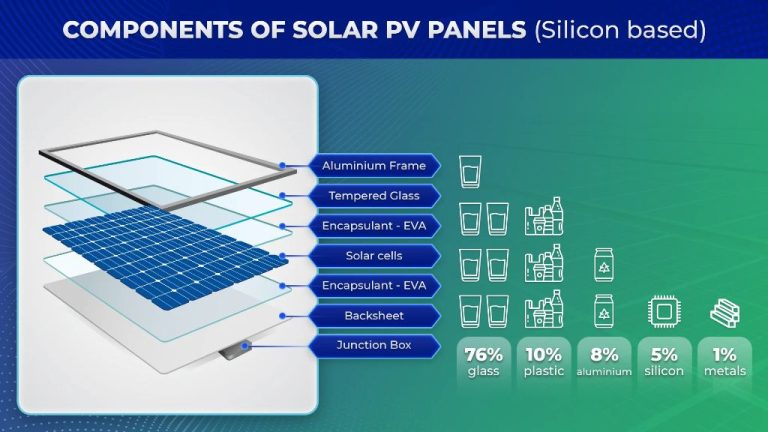What Is Sun Resources?
The Sun is the star at the center of our solar system and the most important source of energy for life on Earth. It is a nearly perfect sphere of hot plasma, heated to incandescent gases at its core. With a diameter of about 1.4 million kilometers, the Sun contains 99.8% of the mass of the entire solar system.
The immense gravity at the Sun’s core produces immense pressure and temperature, enabling thermonuclear fusion reactions that convert hydrogen into helium. This process releases enormous amounts of energy in the form of light and heat. The Sun’s inner regions transport thermal energy to the exterior through convection and radiation.
The Sun’s heat and light make life possible on Earth. Solar energy powers photosynthesis in plants, winds, ocean currents, the water cycle, and weather. The Sun’s consistent output of radiation and its relative distance from Earth enables life by providing warmth and energy without too much seasonal variation.
Composition of the Sun
The Sun is composed primarily of hydrogen and helium gas. Hydrogen accounts for roughly 75% of the mass of the Sun, while helium makes up about 23%. The remaining 2% consists of trace amounts of oxygen, carbon, neon, nitrogen, silicon, magnesium, iron and sulfur.
The Sun has distinct layers based on temperature and composition. At the core, temperatures reach 15 million degrees Celsius. Nuclear fusion converts hydrogen into helium, releasing enormous amounts of energy in the process. Surrounding the core is the radiative zone, where energy from the core is transported outward by radiation. Next is the convective zone, where hot blobs of plasma transport heat toward the surface through convection currents. The visible surface of the Sun is known as the photosphere. Above the photosphere lie the chromosphere and the corona, the outer atmosphere of the Sun.
Understanding the elemental composition and internal structure of the Sun provides insight into the nuclear reactions powering our closest star. The interaction between the different layers also influences solar activity and phenomena like sunspots, solar flares and coronal mass ejections.
Energy Production in the Sun
The Sun produces energy through the process of nuclear fusion in its core. This is the combining of hydrogen atoms into helium under immense heat and pressure, releasing vast amounts of energy in the process. The Sun’s core reaches temperatures of 15 million degrees Celsius, providing the environment needed for fusion reactions.
The energy released by fusion rises outward from the core, eventually reaching the Sun’s outer layers. The zone where this energy is transported by convection is known as the convection zone. Hot gases and plasma carry energy up to the surface in a constant roiling motion. Above the convection zone is the radiation zone, where energy moves outward by means of photons or electromagnetic radiation.
The energy transported through the radiation zone eventually reaches the photosphere, the Sun’s visible surface. This radiant energy streams outward in all directions, bathing planets like Earth in heat and light. The Sun’s consistent production of solar energy, fueled by nuclear fusion, is why life exists on our planet. Humanity has only begun to tap into the potential of this renewable power source.
Solar Radiation and Light
The sun produces an enormous amount of energy in the form of electromagnetic radiation. This radiation consists of radio waves, microwaves, infrared radiation, visible light, ultraviolet rays, X-rays, and gamma rays. However, only visible light, ultraviolet rays, and infrared radiation reach the Earth’s surface.
The sun’s visible light spectrum ranges from violet with wavelengths around 400 nanometers to red with wavelengths around 700 nanometers. The color we perceive depends on the wavelength of the light. Visible sunlight allows us to see colors and illuminates Earth during the daytime. Photosynthetic organisms like plants use visible light to convert sunlight into chemical energy.
Ultraviolet (UV) rays have shorter wavelengths than visible light. UV rays have both positive and negative effects on Earth. On the positive side, UV rays trigger vitamin D production in humans and initiate chemical reactions in the atmosphere. But excess exposure can damage DNA, cause skin cancer and eye damage, and harm plants and ecosystems.
Infrared radiation has longer wavelengths than visible light. Infrared heat warms the planet’s surface and the gases and particles in the atmosphere. Most thermal radiation emitted from the Earth’s land and sea is in the infrared region.
Effects of Solar Energy on Earth
The Sun’s energy affects the Earth in profound ways. Solar radiation from the Sun powers many important natural processes on Earth. Here are some of the major effects of solar energy on Earth:
Photosynthesis
Sunlight powers photosynthesis, the process plants use to convert carbon dioxide and water into oxygen and energy-rich sugars. Photosynthesis is fundamental for nearly all life on Earth. Plants, algae, and some bacteria harness solar energy to drive photosynthesis and sustain the entire food chain on Earth.
Weather and Climate
The Sun is the main source of energy that heats the Earth’s surface and drives global weather and climate patterns. Solar energy heats the air, provides the energy for wind currents, and powers the water cycle that underlies all weather. The Sun also drives the Earth’s atmospheric and ocean currents that distribute heat around the planet and shape climate zones. Variations in solar irradiance impact average global surface temperatures.
Tidal Forces
The gravitational pull from the Sun creates daily tidal bulges in the Earth’s oceans and atmosphere. The Sun’s and Moon’s gravity combine to create spring and neap tides and the tidal currents and forces that many coastal and marine ecosystems depend on.
Using Solar Power

The sun’s energy can be harnessed in different ways to produce electricity, provide lighting, and heat water. The most common technologies for utilizing solar power are solar cells, solar panels, solar thermal collectors, and concentrated solar power plants.
Solar cells, also called photovoltaic (PV) cells, convert sunlight directly into electricity. They are made of semiconducting materials like silicon that absorb photons from sunlight and release electrons, generating an electric current. Solar cells are combined and sealed into solar panels, which can be installed on rooftops or ground-mounted structures.
Solar thermal collectors, such as flat plates or evacuated tubes, absorb heat from the sun to warm up a liquid or air. The thermal energy captured can heat water for domestic or industrial uses, and even generate electricity through a steam turbine. Solar thermal systems are generally less expensive than solar panels.
Concentrated solar power (CSP) systems use mirrors or lenses to focus a large area of sunlight onto a small area to produce intense heat and generate electricity. CSP plants utilize the focused heat to drive a steam turbine connected to an electrical power generator. CSP requires direct solar radiation and is an alternative to photovoltaics in sunny regions.
Solar energy can be utilized in small-scale applications like solar-powered calculators, or integrated into the electricity grid to power entire communities through solar farms.Solar power provides clean, renewable energy from an abundant resource, the sun.
Solar Energy Potential
Solar energy offers a practically unlimited supply of renewable power. The sun produces about 38,460 sextillion watts of radiation, equivalent to 1.74 million billion megawatt hours per year—thousands of times more energy than the world currently uses. The amount of solar energy that hits the Earth in one hour is equal to the amount of energy consumed worldwide in an entire year. And solar energy is available to every country in the world.
Harnessing even a tiny fraction of the sun’s energy would go a long way toward reducing reliance on finite fossil fuels like coal, oil, and natural gas. While fossil fuels may only last around 50-100 more years at current consumption rates, the sun will continue shining for billions of years—making solar a clean, sustainable long-term energy solution. With solar power, energy-importing countries can achieve greater energy independence. And all nations can benefit from cleaner air and reduced greenhouse gas emissions.
Challenges of Solar Power
While solar power has enormous potential as a renewable energy source, there are some key challenges that need to be addressed for it to reach its full potential. Some of the main challenges with solar power include:
Intermittency
One of the biggest challenges with solar power is its intermittent nature. Solar panels only produce energy when the sun is shining. At night and on cloudy days, solar panels may produce little to no energy. This intermittency can make it difficult to rely solely on solar power without having energy storage or backup power sources available.
Energy Storage
Because solar power is intermittent, effective energy storage solutions are critical for when the sun is not shining. Developing cost-effective, large-scale energy storage technologies continues to be a challenge. Batteries can store solar energy for use at night, but they are still expensive for large-scale needs. Other solutions like pumped hydroelectric storage depend on specific geographic requirements. More research is needed to create viable wide-scale energy storage options.
High Upfront Costs
While the cost of solar panels has dropped dramatically over the past decade, the upfront installation costs for solar remain high for many homeowners and businesses. Purchasing and installing a solar array requires a significant initial investment, which can deter adoption. Creative financing solutions to spread out costs over time are helping improve solar adoption, but further reducing costs could expand implementation.
Future of Solar Energy
The future looks bright for solar energy. With climate change and fossil fuel depletion as driving forces, solar power is poised to keep growing as an abundant, renewable energy source.
Several trends point toward major improvements in solar technology and adoption:
-
Improving efficiency – Researchers are developing new solar cell materials and designs to convert sunlight into electricity more efficiently. Perovskites, organic cells, and nanomaterials hold promise to substantially increase solar cell efficiency.
-
New technologies – Solar thermal generation, floating solar farms, solar-powered windows, and other innovations open up new possibilities for harnessing the sun.
-
Growth projections – Solar power capacity is expected to expand greatly in coming decades. Projections indicate it may supply up to 40% of global electricity by 2050.
With solar energy unlimited and free, ongoing advances will make it increasingly competitive and ubiquitous for powering our planet.
Conclusion
In conclusion, the sun is an incredibly important source of renewable energy with enormous potential to help meet the world’s growing energy needs in a sustainable way. The sun radiates an astounding amount of energy to the Earth daily in the form of radiation and light. This solar energy can be harnessed in various ways, such as through solar heating and photovoltaic systems, to provide clean power for homes, businesses, and utilities.
Solar energy has many benefits compared to fossil fuels, including reduced greenhouse gas emissions, lower operating costs, and energy independence. Global solar capacity has expanded rapidly in recent years as costs have come down. However, there are still challenges to overcome in terms of intermittency, storage, and grid integration. Continued research, development, and policy support will help solar play a major role in the global clean energy transition. Wise utilization of the sun’s bountiful energy can provide endless possibilities for powering our world in an environmentally responsible way.
In summary, solar resources offer a bright future for renewable energy but require smart strategies and technologies to fully realize their potential. Tapping into the sun’s daily energy output even more efficiently can help create a more sustainable energy system and society.






